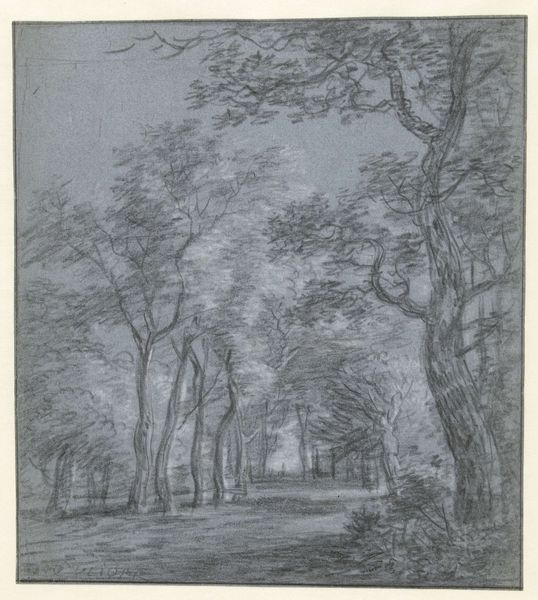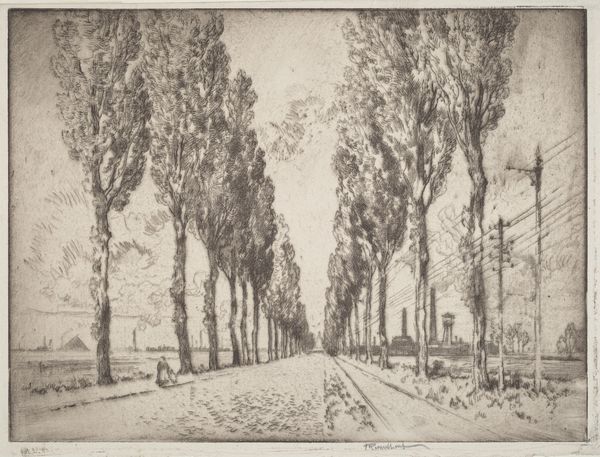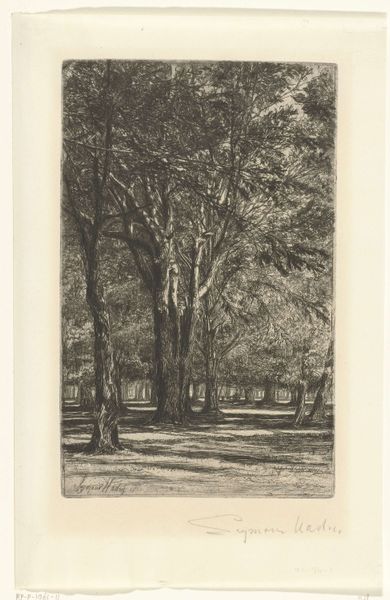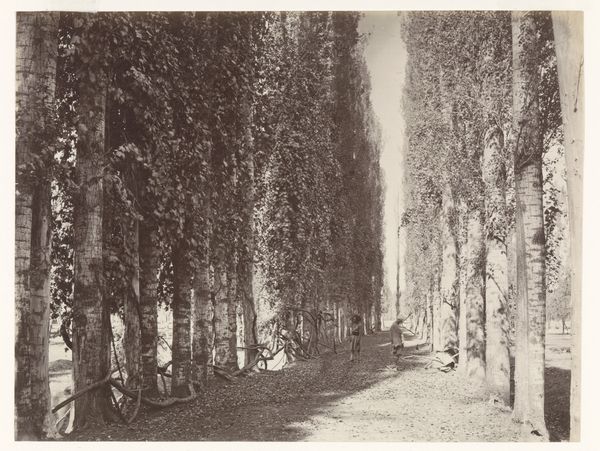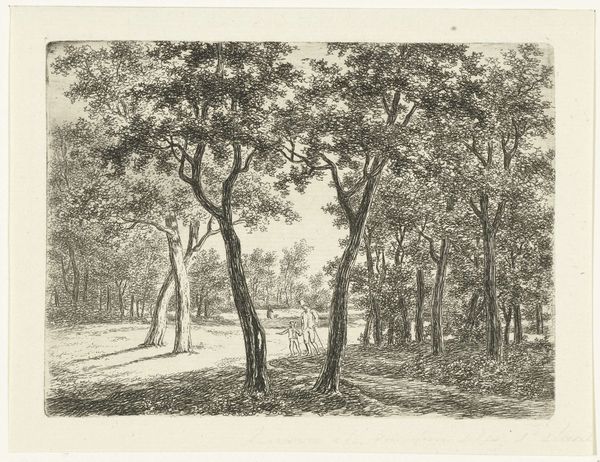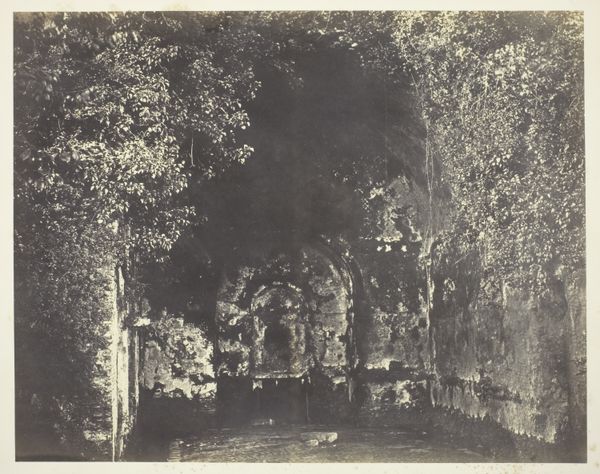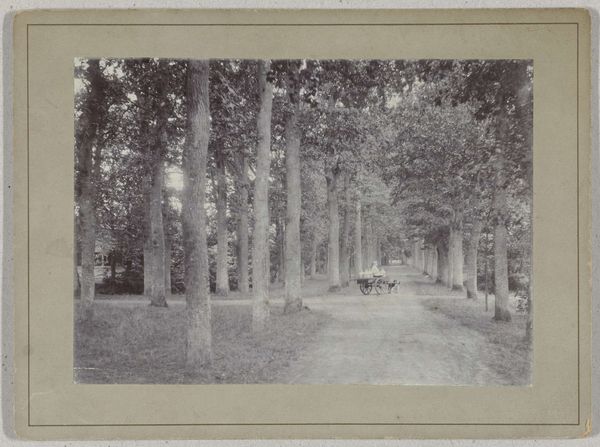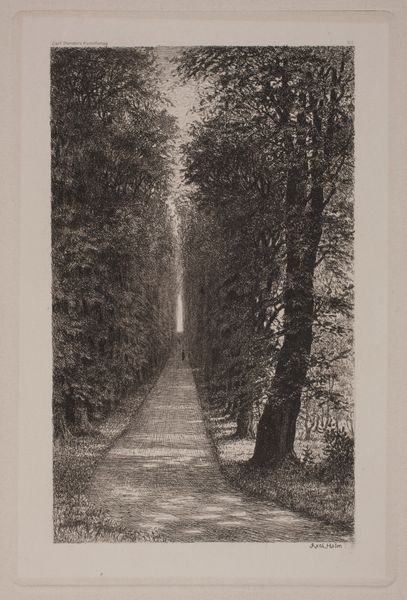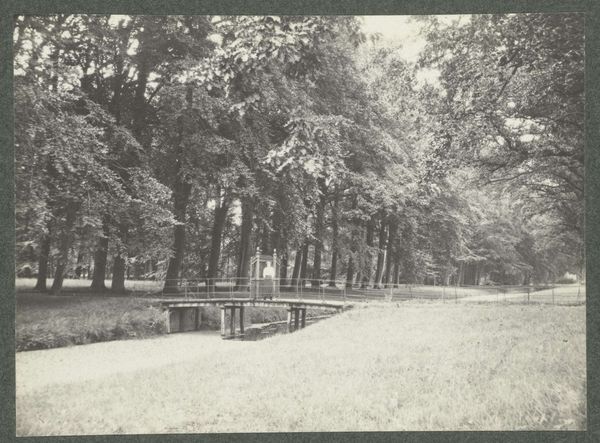![[Allée of Trees, Pau] by William Henri Gebhard](/_next/image?url=https%3A%2F%2Fd2w8kbdekdi1gv.cloudfront.net%2FeyJidWNrZXQiOiAiYXJ0ZXJhLWltYWdlcy1idWNrZXQiLCAia2V5IjogImFydHdvcmtzLzQ1NGRkODQ2LWQzZGItNDZkYi1hN2RkLTE5MWNkZWU5ZmI2YS80NTRkZDg0Ni1kM2RiLTQ2ZGItYTdkZC0xOTFjZGVlOWZiNmFfZnVsbC5qcGciLCAiZWRpdHMiOiB7InJlc2l6ZSI6IHsid2lkdGgiOiAxOTIwLCAiaGVpZ2h0IjogMTkyMCwgImZpdCI6ICJpbnNpZGUifX19&w=3840&q=75)
#
tree
#
natural photography
#
wedding photography
#
nature
#
outdoor photography
#
outdoor loving
#
outdoor scenery
#
mountain
#
nature friendly
#
nature heavy
#
nature environment
#
outdoor activity
Dimensions: Image: 13 11/16 × 9 3/4 in. (34.7 × 24.7 cm) Mount: 24 7/16 in. × 18 5/8 in. (62 × 47.3 cm)
Copyright: Public Domain
Curator: What a wonderfully evocative image. This is “[Allée of Trees, Pau],” a photograph created by William Henri Gebhard in 1854. It resides here with us at The Met. Editor: It’s a long, lonely road, isn’t it? The tonal range feels almost monochromatic, and there’s something about the light and shadow play that suggests both peace and melancholy. Curator: Indeed. As one of the earliest photographers, Gebhard was working within a specific set of material conditions. We need to consider the labor involved in setting up his equipment and the time exposure would have taken, rendering any movement blurry. What stories do these considerations tell? Editor: I am more interested in the act of making visible—of allowing a gaze at a specific locale and time that perhaps had restricted access before. This allée—was it a space of leisure? Who enjoyed its shade? Who maintained it, and what power dynamics were at play in a mid-19th century context? Curator: Exactly! The social context is paramount. We must consider the impact that photography itself had. Early photography often mirrored established artistic conventions, and this particular photograph's composition and use of light are reminiscent of landscape paintings popular at the time. The relationship to craft and material conditions here offers ways to interpret its social role. Editor: True. Understanding the context shifts our perception. How does the knowledge that the photograph comes from an era defined by expanding empires influence our experience? And if the subject of the piece focuses on the romanticized allure of nature, do we interrogate that, given that many colonized and exploited land around the world. Curator: Yes, framing our discussions like this encourages visitors to look beyond aesthetics and think critically. By understanding the materiality and labor involved, we appreciate the art in all its complexity. Editor: Precisely. By engaging with historical and political elements in art, we expand our understanding and create necessary dialogues about what is worth preserving in our contemporary society.
Comments
No comments
Be the first to comment and join the conversation on the ultimate creative platform.
